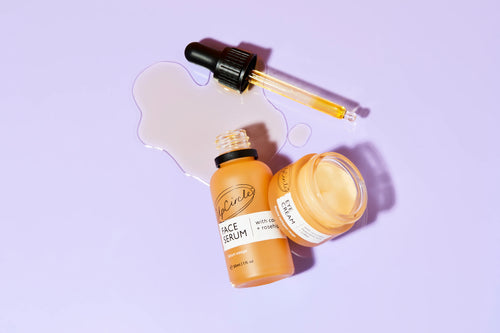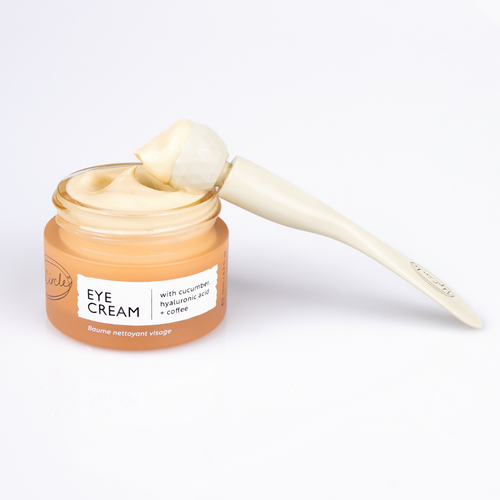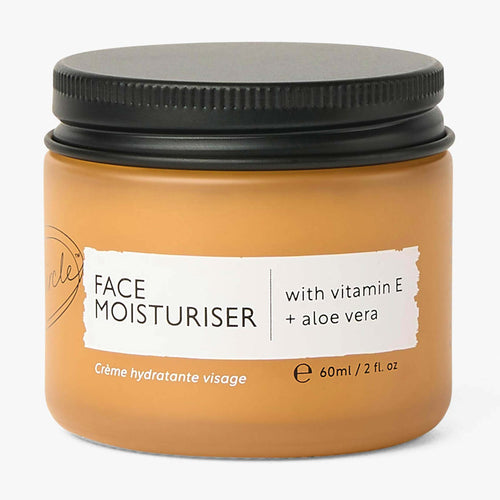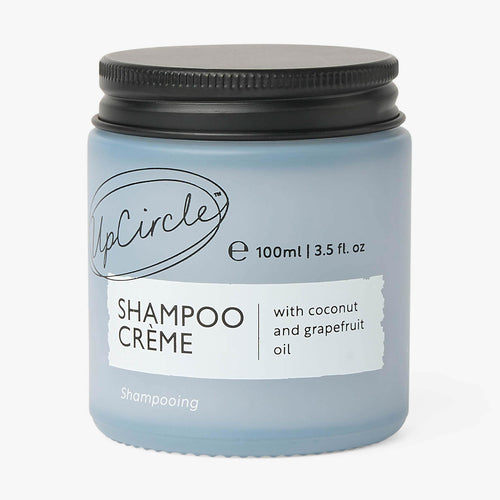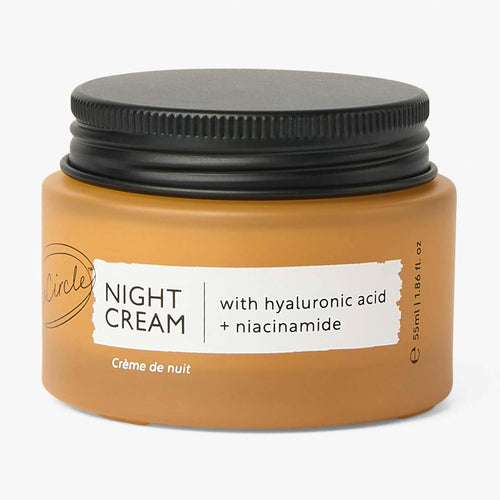Chances are that you’ve found yourself with UpCircle for a few different reasons. For many it is a combination of choosing more sustainable planet-friendly skincare, but also choosing more natural and skin-kind products too. If you’re like us, you’ve probably found that the more aware you become about skincare products, the more you want to learn about your skin.
Learning about the structure of the skin and the skin microbiome is a really important part of this journey. It is only when you truly understand how your skin works that you can understand why it’s important to carefully consider what you put on it. And we promise we won’t subject you to a boring GCSE biology lesson in the process!
The skin is an organ. And indeed, it’s the largest organ in the body, making up about a sixth of our body weight. It has a protective role (against damage or impact, as well as from attack from harmful microbes), but it also helps us regulate our body temperature and balance fluids. Of course, if it wasn’t for your skin, you wouldn’t have the capacity for touch. It is vital for health.
Being perhaps our most visible organ, the condition of our skin can have an impact on how we view ourselves.
Your skin is ever changing. It’s constantly renewing itself. There are three main layers: the epidermis, the dermis and the subcutis. Each of these layers then has its own sub-layers. There are also various ‘extras’ within the layers, such as hair follicles, sweat glands and sebaceous glands (for releasing sebum – the oil that protects the skin).
The epidermis is likely what you think of when you think of your skin. It’s the outermost layer – the layer you can see. Its number one job is to serve as a sensory feedback station, and to protect you both from external issues (such as toxins and bacteria) and from internal issues (loss of fluid).
The epidermis has five sub-layers of keratinocyte cells, but in total it is a mere 0.1mm thick! Each layer is slightly different and as the cells mature, they gradually reach the very outer layer. When the layer of cells reaches the outside, they die and are shed.
Over the epidermis, we have a film (the hydrolipid film) which is effectively an emulsion of fats and water. This prevents our skin from becoming too dry, but also aids its flexibility. The hydrolipid film is naturally slightly acidic. This makes it a perfect environment for your skin microbiome.
The skin microbiome is also known as the skin flora. Like your gut, your skin is home to billions of different microbes. These microbes aren’t harmful at all; in fact, they are necessary for the health of your skin. There are multiple different types of microorganisms making up your skin microbiome. Indeed, we’ve still got a lot to learn about skin microbiome composition.
The microbes in your skin microbiome feed off the oil, water and salt that your skin releases. The diversity and quality of your microbiome can be affected by a few different things, from your body temperature to the density of your hair follicles. We do know that your skin microbiome isn’t uniform. For example, it’s different on the soles of your feet to on your nose.
Your skin microbiome is critical to your overall health. It’s not actually the skin cells that act as the first line of defence. Instead it’s these microbes, working tirelessly, like your own personal army! It actually helps out your immune system too.
However, as you can imagine, these microorganisms are also pretty vulnerable themselves, living on the surface of your skin. That’s why you need to think carefully about the types of skincare you use. We’ll come onto how to improve your skin microbiome after exploring the remaining two main layers of the skin.
The dermis is the middle layer of your skin. It’s thick and it’s elastic. This is where you find elastin and collagen. The dermis is all about strength and flexibility. Without the dermis you wouldn’t be able to move, but it also has the purpose of protection, by providing cushioning.
The dermis has two sub layers: the stratum reticulare and the stratum papillare. These layers also have the job of removing waste from the skin. It’s in the dermis that you find hyaluronic acid, which binds water and keeps the skin plumped up.
We can think of the dermis as being the middle guy – protecting us from difficulties both inside and out. It’s where most of the function of wound healing takes place, with lots of blood vessels, which also remove waste. It’s also where you find the sebaceous and sweat glands.
Just because it’s not the top layer, don’t be fooled and think that external factors can’t harm this layer. It is here that lifestyle factors, and things like sun exposure, can really be impactful.
The subcutis, or hypodermis, is the bottom layer of skin. Its main function is to insulate the body and provide padding, whilst being an energy store. Yes, it’s the fatty layer! Here you’ll find densely packed fat cells, as well as collagen fibres and lots of blood vessels.
The amount of fat in the subcutis is different in different areas of the body, as well as from person to person due to lifestyle and genetics, as well as between men and women.
The good news is that there is a lot that you can do to improve your skin microbiome and skin health.
We recommend using all natural products, especially cleansers. Harsh synthetic cleansers don’t just wash the microbes away, but they clean away the ‘food’ that the microbes feed off – the sebum, salt and water. Be careful to use gentle natural exfoliation, like our repurposed coffee scrubs, to prevent micro tears which become a haven for the unhealthy microbes.
Also pay attention to your diet. Like with your gut microbiome, food is really important. Choose a diet rich in leafy greens, a rainbow of vegetables and healthy fats. Make sure you drink plenty of water too.
You should also take particular care to choose natural moisturisers which are kind to your skin microbiome.
Indeed, when it comes to your skincare and the health of your skin, opting for natural is the kindest thing you can do.
Learning about the structure of the skin and the skin microbiome is a really important part of this journey. It is only when you truly understand how your skin works that you can understand why it’s important to carefully consider what you put on it. And we promise we won’t subject you to a boring GCSE biology lesson in the process!
Skin – a remarkable organ
The skin is an organ. And indeed, it’s the largest organ in the body, making up about a sixth of our body weight. It has a protective role (against damage or impact, as well as from attack from harmful microbes), but it also helps us regulate our body temperature and balance fluids. Of course, if it wasn’t for your skin, you wouldn’t have the capacity for touch. It is vital for health.Being perhaps our most visible organ, the condition of our skin can have an impact on how we view ourselves.
Your skin is ever changing. It’s constantly renewing itself. There are three main layers: the epidermis, the dermis and the subcutis. Each of these layers then has its own sub-layers. There are also various ‘extras’ within the layers, such as hair follicles, sweat glands and sebaceous glands (for releasing sebum – the oil that protects the skin).
Epidermis
The epidermis is likely what you think of when you think of your skin. It’s the outermost layer – the layer you can see. Its number one job is to serve as a sensory feedback station, and to protect you both from external issues (such as toxins and bacteria) and from internal issues (loss of fluid). The epidermis has five sub-layers of keratinocyte cells, but in total it is a mere 0.1mm thick! Each layer is slightly different and as the cells mature, they gradually reach the very outer layer. When the layer of cells reaches the outside, they die and are shed.
Over the epidermis, we have a film (the hydrolipid film) which is effectively an emulsion of fats and water. This prevents our skin from becoming too dry, but also aids its flexibility. The hydrolipid film is naturally slightly acidic. This makes it a perfect environment for your skin microbiome.
What is your skin’s microbiome?
The skin microbiome is also known as the skin flora. Like your gut, your skin is home to billions of different microbes. These microbes aren’t harmful at all; in fact, they are necessary for the health of your skin. There are multiple different types of microorganisms making up your skin microbiome. Indeed, we’ve still got a lot to learn about skin microbiome composition.The microbes in your skin microbiome feed off the oil, water and salt that your skin releases. The diversity and quality of your microbiome can be affected by a few different things, from your body temperature to the density of your hair follicles. We do know that your skin microbiome isn’t uniform. For example, it’s different on the soles of your feet to on your nose.
Your skin microbiome is critical to your overall health. It’s not actually the skin cells that act as the first line of defence. Instead it’s these microbes, working tirelessly, like your own personal army! It actually helps out your immune system too.
However, as you can imagine, these microorganisms are also pretty vulnerable themselves, living on the surface of your skin. That’s why you need to think carefully about the types of skincare you use. We’ll come onto how to improve your skin microbiome after exploring the remaining two main layers of the skin.
Dermis
The dermis is the middle layer of your skin. It’s thick and it’s elastic. This is where you find elastin and collagen. The dermis is all about strength and flexibility. Without the dermis you wouldn’t be able to move, but it also has the purpose of protection, by providing cushioning. The dermis has two sub layers: the stratum reticulare and the stratum papillare. These layers also have the job of removing waste from the skin. It’s in the dermis that you find hyaluronic acid, which binds water and keeps the skin plumped up.
We can think of the dermis as being the middle guy – protecting us from difficulties both inside and out. It’s where most of the function of wound healing takes place, with lots of blood vessels, which also remove waste. It’s also where you find the sebaceous and sweat glands.
Just because it’s not the top layer, don’t be fooled and think that external factors can’t harm this layer. It is here that lifestyle factors, and things like sun exposure, can really be impactful.
Subcutis
The subcutis, or hypodermis, is the bottom layer of skin. Its main function is to insulate the body and provide padding, whilst being an energy store. Yes, it’s the fatty layer! Here you’ll find densely packed fat cells, as well as collagen fibres and lots of blood vessels.The amount of fat in the subcutis is different in different areas of the body, as well as from person to person due to lifestyle and genetics, as well as between men and women.
How to improve your skin microbiome and skin health
The good news is that there is a lot that you can do to improve your skin microbiome and skin health.We recommend using all natural products, especially cleansers. Harsh synthetic cleansers don’t just wash the microbes away, but they clean away the ‘food’ that the microbes feed off – the sebum, salt and water. Be careful to use gentle natural exfoliation, like our repurposed coffee scrubs, to prevent micro tears which become a haven for the unhealthy microbes.
Also pay attention to your diet. Like with your gut microbiome, food is really important. Choose a diet rich in leafy greens, a rainbow of vegetables and healthy fats. Make sure you drink plenty of water too.
You should also take particular care to choose natural moisturisers which are kind to your skin microbiome.
Indeed, when it comes to your skincare and the health of your skin, opting for natural is the kindest thing you can do.

